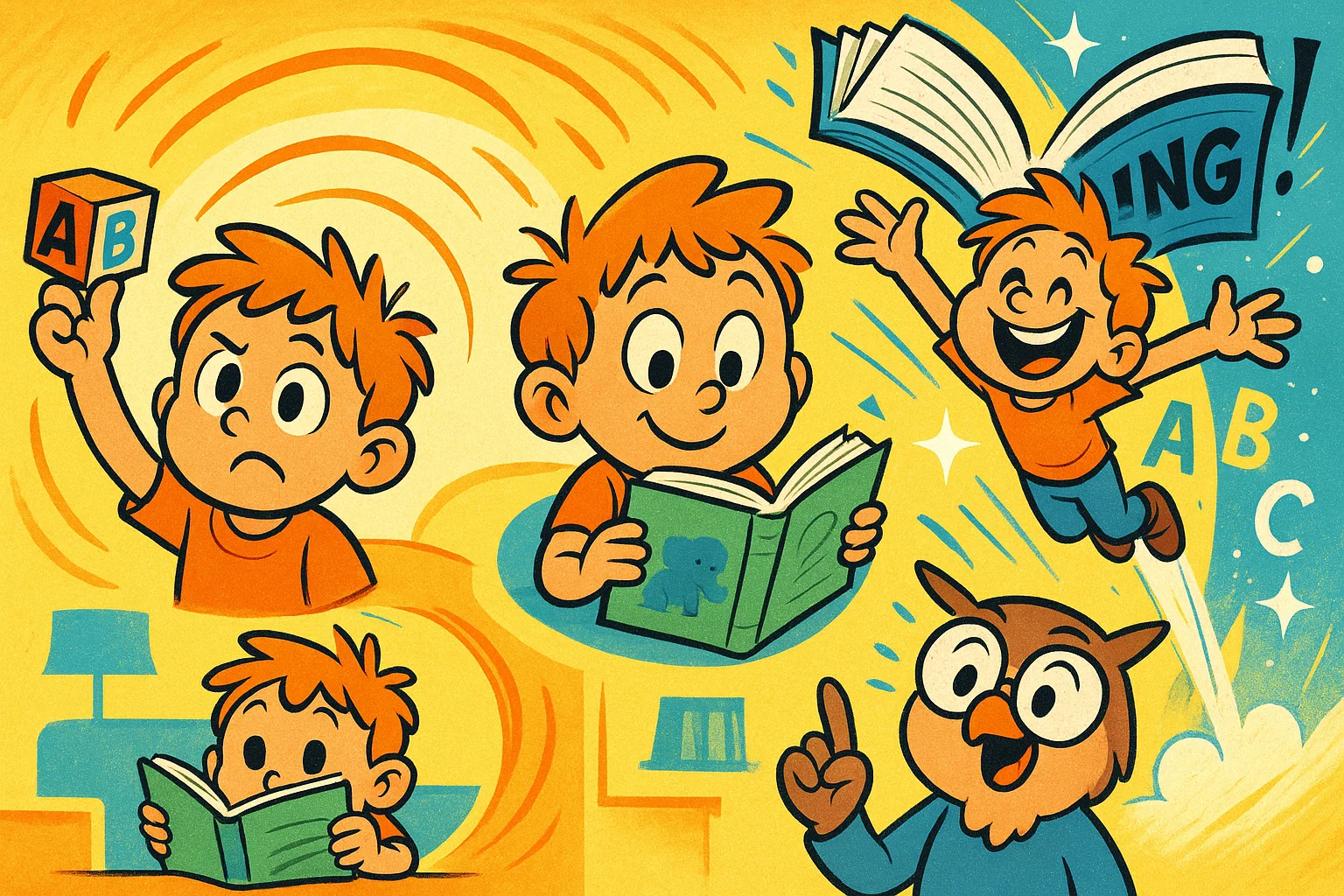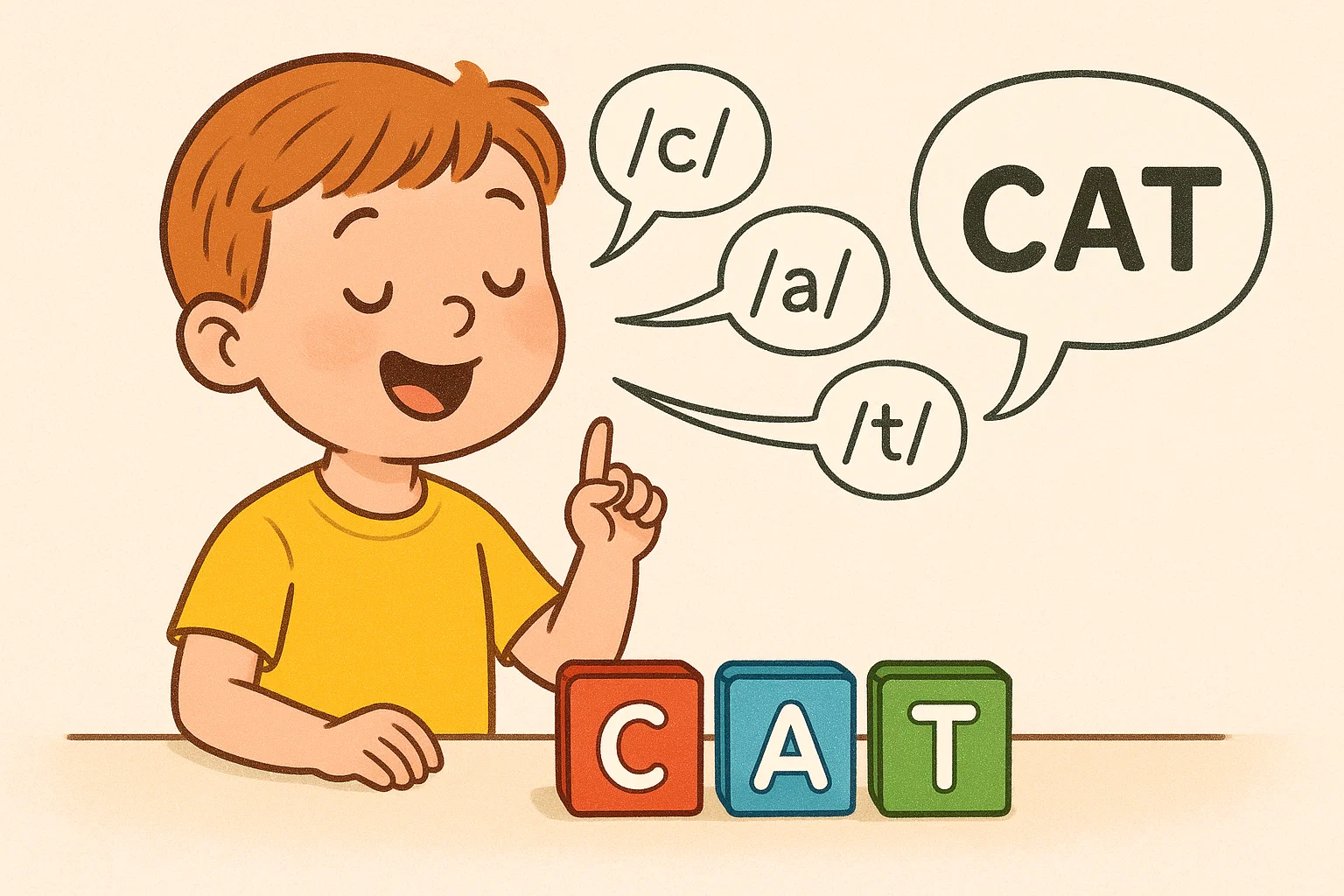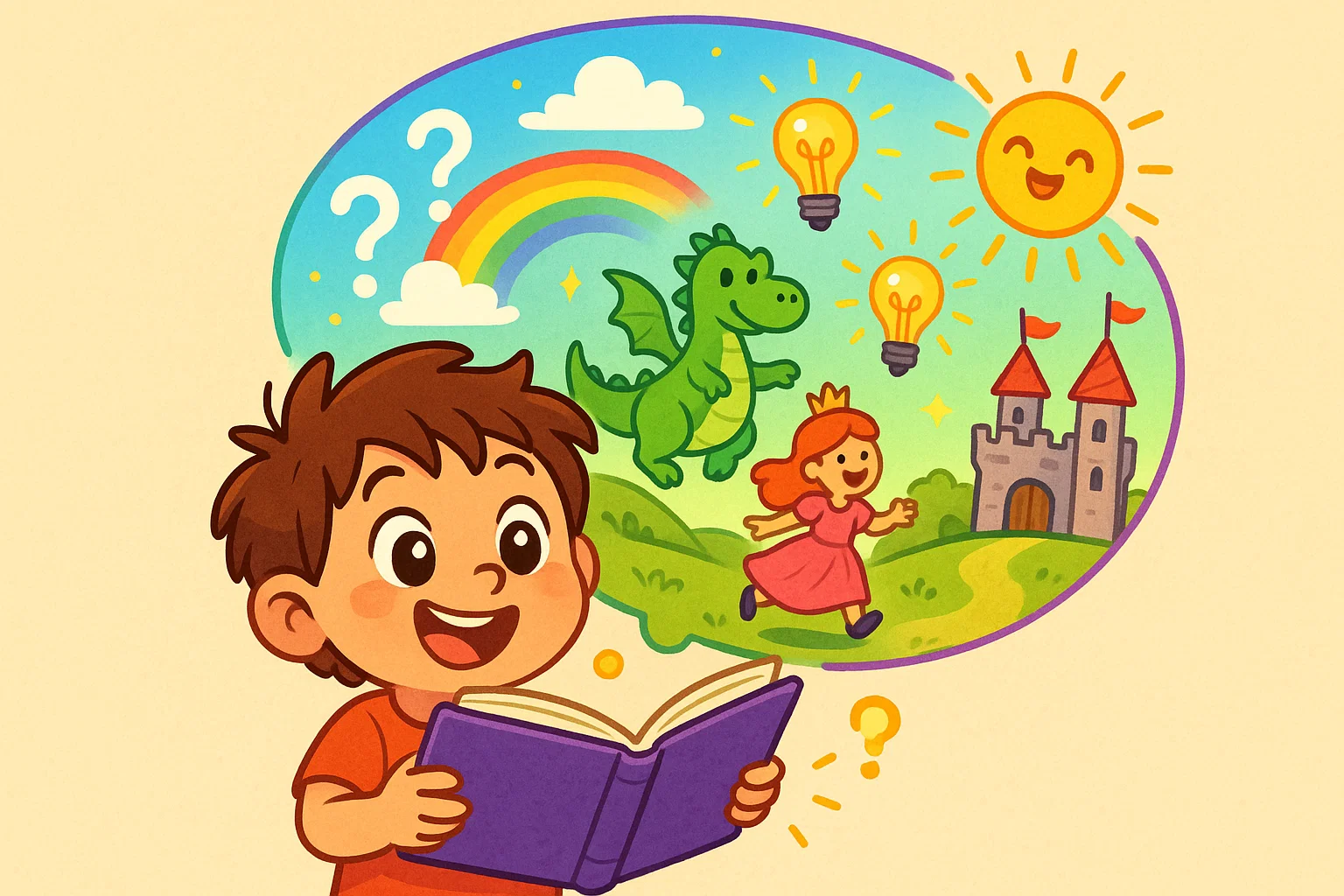How to Teach a Child to Read: Teaching Children Literacy

Teaching your child to read is one of the most rewarding journeys you’ll embark on together. Every child can achieve reading success with the right approach, patience, and consistent support.
This comprehensive guide will walk you through proven methods to help kids develop strong literacy skills while fostering a lifelong love for reading, making learning to read enjoyable.
Why Reading Matters for Children
Reading serves as the foundation for all learning, opening doors to knowledge, imagination, and personal growth. When kids to read effectively, they gain tools that will serve them throughout their lives.
Emotional and Social Growth
Reading nurtures emotional intelligence and social understanding. Through stories, children explore different perspectives, develop empathy, and learn to navigate complex emotions. Books provide safe spaces for them to experience and process various situations before encountering them in real life.
Additionally, shared reading experiences strengthen family bonds and create lasting memories. When you read together, you’re not just teaching kids literacy skills—you’re building relationships and creating positive associations with learning.
A Step-by-Step Guide to Teaching Your Child to Read
Teaching children to read is one of the most rewarding journeys a parent or educator can embark on. It opens up a world of imagination and knowledge, laying the foundation for a lifelong love of learning. While every child learns at their own pace, following a structured approach grounded in the science of reading can make the process smooth and effective. The goal is not just to help a child read early, but to foster a genuine love of reading. This guide breaks down the essential steps to follow when your child is ready to read.
1. Build Phonemic Awareness: The Foundation of Sound
Before a child can read, they need to hear. Phonemic awareness is the ability to identify and manipulate the individual sounds in words. This is a crucial first step in order to read and write successfully. Start by playing with sounds. Use fun activities like rhymes, singing songs, and reading tongue twisters to help your child understand the sounds that make up language. Simple games like “I spy something that starts with the /b/ sound” help kids learn to isolate and recognize sounds in words.
2. Teach alphabet and Letter Sounds with Phonics

Once a child can hear the sounds, the next step is connecting those sounds with letters. This is the core of methods like phonics. Focus on teaching the sounds of letters rather than just their names (e.g., the sound /a/ as in “apple,” not the name “ay”). Introduce just a few letters and letter sounds at a time, practicing them until they are mastered before moving on. There are many great books and resources available to make this a fun, game-like experience.
3. Blend Sounds Together to Form Words
This is where the magic happens. Teaching a child to blend individual sounds together smoothly is how they begin to decode words. Start with simple, three-letter words. Say each sound individually—/c/ … /a/ … /t/—and then model how to slide the sounds together to say “cat.” This process helps children to learn how to read using the letter-sound knowledge they’ve acquired. Be patient and practice blending sounds together out loud until it becomes more natural.
4. Start with Familiar Words

Confidence is key. Begin with words the child already knows and uses in conversation. Seeing their own name, “mom,” “dad,” or the name of a pet in written form is incredibly motivating. This helps them understand that the squiggles on the page represent words they use every day. While phonics is essential, this is also a good time to start teaching sight words—common words like “the,” “a,” and “is” that don’t always follow phonetic rules but are necessary to read simple sentences.
5. Practice with Simple, Engaging Texts
When your child has mastered enough sounds to read a few words, introduce them to decodable texts. These are short passages or books specifically designed to use the letter sounds the child knows. Look for books with large print, simple sentences, and lots of pictures to provide context clues. The goal is for them to successfully read simple text, which builds the confidence they need to tackle more complex material later on.
6. Read Together Every Single Day
Never underestimate the power of reading aloud. When you read together daily, you build your child’s vocabulary, comprehension, and background knowledge. It also models what fluent reading sounds like and fosters a deep love of books. Encourage your child to read along with you, pointing to the words as you say them. Make it a cozy, enjoyable ritual that they look forward to each day.
7. Encourage Rereading Favorite Books

It may seem repetitive to you, but rereading is a powerful learning tool. Each time a child rereads a favorite book, their word recognition becomes faster and their comprehension deepens. They start to read like a storyteller, with more expression and fluency. You can even track the books they’ve mastered on a chart to celebrate their progress and show them how much they’ve accomplished.
8. Keep Reading Fun and Pressure-Free
Above all, ensure that learning to read is a positive and joyful experience. Pay attention to cues that your child is interested and ready for the next step, but never push them. If they get frustrated, take a break and try again later. The ultimate goal is not just developing the ability to read, but cultivating a passion that will lead them to read lots of books, from picture books today to chapter books in the future.
Resources to Support Reading Instruction
Quality resources enhance your teaching efforts and provide variety in your child’s reading experiences. Choose materials that align with your child’s interests and skill level.
Recommended Books and Series
Beginning readers benefit from predictable, engaging texts with appropriate vocabulary and concepts. Consider these popular series:
For Emergent Readers:
- “Bob Books” series by Bobby Lynn Maslen
- “Frog and Toad” by Arnold Lobel
- “Mercy Watson” series by Kate DiCamillo
For Developing Readers:
- “Magic Tree House” series by Mary Pope Osborne
- “Junie B. Jones” series by Barbara Park
Choose books that match your child’s reading level while providing engaging content that motivates continued reading.
Digital Tools and Apps

Technology can supplement traditional reading instruction when used appropriately. Educational apps and websites offer interactive practice and immediate feedback.
Recommended digital resources include:
- Starfall (phonics and sight words)
- Reading Eggs (comprehensive reading program)
- Epic Books (digital library for children)
- PBS Kids games (educational reading games)
Balance screen time with traditional book reading to ensure comprehensive literacy development.
Common Questions on Foundational Literacy
Here are answers to common questions about helping kids learn to make sense of text at home, offering easy tips and effective methods.
What age is best to start teaching a child this skill?
Most children show readiness for formal instruction between ages 4-6, but it’s best to let your child lead by showing interest. Look for signs of readiness rather than focusing on age: interest in books, recognition of some letters, and the ability to identify rhyming words. A child needs a good foundation in these pre-literacy skills before moving on. You can begin foundational activities much earlier by sharing books aloud and playing word games.
How does phonological awareness help a child learn to decode?
Phonological awareness enables children to hear and manipulate sounds in spoken words. This skill is essential for understanding the relationship between sounds and letters. Children with strong phonological awareness can decipher unfamiliar words more easily, spell more accurately, and develop fluency faster.
What if a child finds it hard to make sense of words?
Difficulties with this process are common. A child may struggle with specific areas, so the first step is to identify the challenge. If blending is hard, focus on phonics and practice with simple words. You can use different tools, from flashcards to a fun worksheet, to provide targeted practice. Remember that persistence often leads to breakthrough moments when they can finally read words with more ease.
Is it better for a child to practice silently or out loud?
Both approaches are important. Early learners benefit from practicing aloud because it allows you to monitor their decoding skills. As they become more confident and can read without frequent help, it’s important to encourage them to read independently in silence. This builds stamina and personal enjoyment.
How can I help my kindergartener with letters and words?
A great way to teach kindergarteners is to keep learning fun. Focus on foundational skills like daily practice with both uppercase and lowercase letters. A key part of this stage is also teaching sight words—these are the common words like “the” and “is” that appear frequently. Blending these strategies with engaging stories is highly effective.
What skills should I prioritize when teaching my child?
Focus on these core areas in order: phonological awareness, letter recognition, and phonics. It’s crucial to show your child the connection between letters and their sounds. From there, you can build vocabulary with the words your child already understands when heard, which leads to fluency and, finally, comprehension.
How can I make this learning process enjoyable and effective?
Combine structure with creativity. To keep them engaged, ask your child questions about the story or let your child choose the book for storytime. Using games and celebrating small victories makes practice feel like play. Positive associations are as important as skill development for creating lifelong learners.
How long does this process usually take?
The time a child needs varies significantly. Most progress through recognizable stages, from pre-literacy skills to knowing enough to read simple books. Factors like individual pace, consistency, and motivation affect the timeline. Focus on steady progress rather than arbitrary deadlines; consistent support will lead to success and confidence.
